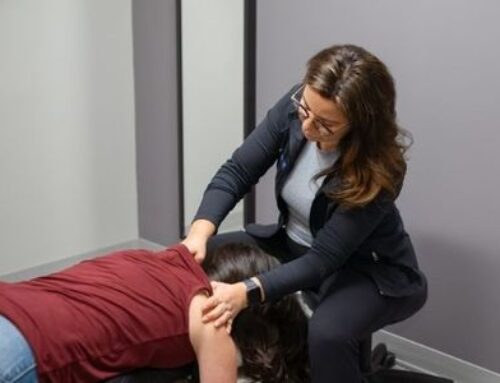Have you ever thought about how you sleep? Like REALLY thought about it. Did you know that the average person spends about one third of their entire life sleeping or attempting to sleep. That’s a large chunk of time yet many of us put next to no thought into how we spend this time! Perhaps we should take some time to think about how we’re doing it.
Here are some important factors to consider:
Sleeping Position and How You Sleep
For many of us, sleep position is just whatever position feels comfortable in the moment but body position is really important if you want to maximize how you sleep. There are three major postures: stomach, back and side lying.
Stomach Sleeping
You want to avoid this sleep position whenever possible as there’s really no benefit. Stomach sleeping forces the sleeper to turn their
head to the side applying force onto the opposite side of the neck via the mattress. This cranks the head into extension and lateral flexion. This is the perfect position to over stress the scalene muscles. Ever wake up with tingling and numbness down
your arm? If you sleep on your stomach this is likely because you are over stretching your scalene muscles and pulling them against your brachial plexus (bundle of nerves that supply your arm). This position also creates extension in the low back where it meets the pelvis, this is especially true if you are sleeping on a softer mattress, but more on that later.
Back Sleeping
This is the best position to sleep in from a postural stand point. Unlike how the stomach position puts extra extension through the low back and into the pelvis, back sleep creates flexion. Most people with low back pain experience sensations of tightness and jamming along the low back and pelvis. Sleeping positions that induce flexion will often help with low back pain. Sleeping on your back also allows the head to remain in a neutral position. The head is able to move anywhere freely elinimating the development of a dominant head rotation. You can further improve this position by adding a pillow under your knees to create extra flexion in the lumbopelvic junction and create extra comfort and support for our legs.
Side Sleeping
This is a middle of the road position – better than stomach sleeping but not nearly as good as back sleeping. When you sleep on your side, you still create a few opportunities for issues. First, if your pillows isn’t firm enough, you create the opportunity for your neck to go into a laterally flexed position when the pillow flattens out. Although this doesn’t put as much stress on the scalene muscles as stomach sleep, it can still create some stress. Additionally, you now risk getting the shoulders and hips involved. Our upside shoulder and upside hip undergo increased tension because our hands and knees often touch when sleeping on our side. This results in the shoulder and hip musculature being overly stretched. This doesn’t occur on the down side shoulder and hip since the mattress keeps them level. The good news is that you can correct many of these problems with pillows. By placing one pillow between your knees and hugging another pillow, you maintain an neutral position in the upside joints while you sleep. You could also use a body pillow or pregnancy pillow – they’re not just for pregnant people! Also, making sure that your head pillow is firm and remains firm throughout the night will help eliminate the lateral flexion problem in the neck.
Pillow and Mattress Firmness
When it comes to pillows and mattresses, the firmer, the better! Firm mattress provides more support and allow for the spine to stay in a more neutral position. You may feel like a soft mattress is more comfortable but at the end of the day, soft mattresses just don’t provide enough support. If a mattress is too soft, any opportunity for discomfort in any of the sleep positions are further exacerbated by the lack of support. Even back sleeping can be uncomfortable when done on a soft mattress over multiple nights.
The same holds true for pillows. If you wake up to your pillow flat as a pancake, then your neck has the freedom to move too far out of neutral position. This can increase tension and pressure on the neck, leading to headaches. So the next time you’re out shopping for a mattress and pillows remember that while firm might not feel comfortable at first, in the long term they will provide the support your body needs.





